Peppervine refers to several plant species, but one commonly referred to is Ampelopsis arborea, a deciduous climbing plant in the grape family (Vitaceae). It is native to the southeastern United States. The berries of this vine are not edible.
Although peppervine is a member of the grape family, you shouldn’t be reaching for its fruit.
The grape-looking berries that grow on the woody vine are inedible and have been reported to cause gastric issues.
However, it’s worth keeping this deciduous woody vine for its aesthetic and pollinator purposes.
What Are You Foraging For Right Now?
We're thrilled to hear your ideas. What would you like to submit today? Feel free to share your thoughts and experiences with us.
What is peppervine?
Nekemias arborea or Ampelopsis arborea, common name peppervine, is a species of flowering plant in the grape family (Vitaceae). This plant is native to North America and is found in various regions, including the southeastern United States.
When dealing with peppervine or similar plants, it’s important to be aware of their invasive potential and take appropriate measures to prevent their spread in natural habitats.
You may also be interested in reading about similar vines, including:
How Do You Identify Peppervine?
Leaves:
- Peppervine has compound leaves. They usually consist of 3 leaflets, though sometimes there may be 5.
- The leaflets can vary in shape but often have toothed margins.
Flowers:
- The flowers of peppervine are small and greenish.
- They typically appear in clusters.
Fruits:
- Peppervine produces small, berry-like fruits that turn dark purple when ripe.
- The fruits are usually found in clusters.
Peppervine plays a role in providing food for wildlife. Birds are known to consume the berries, contributing to seed dispersal.
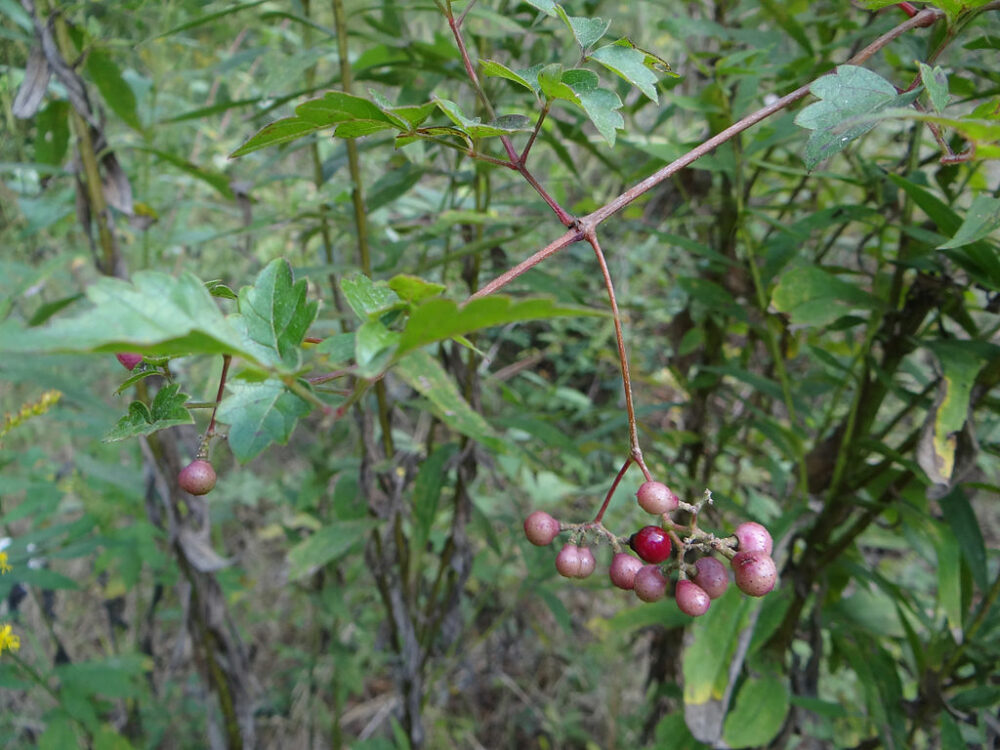
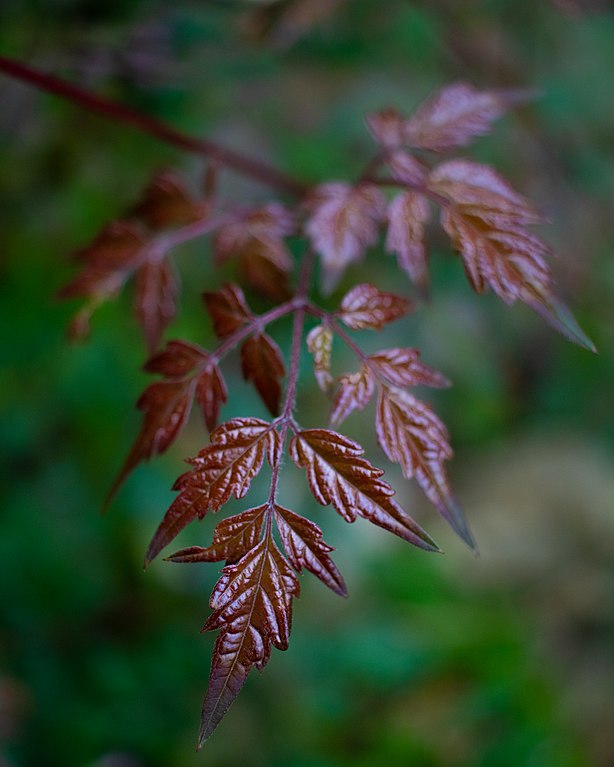
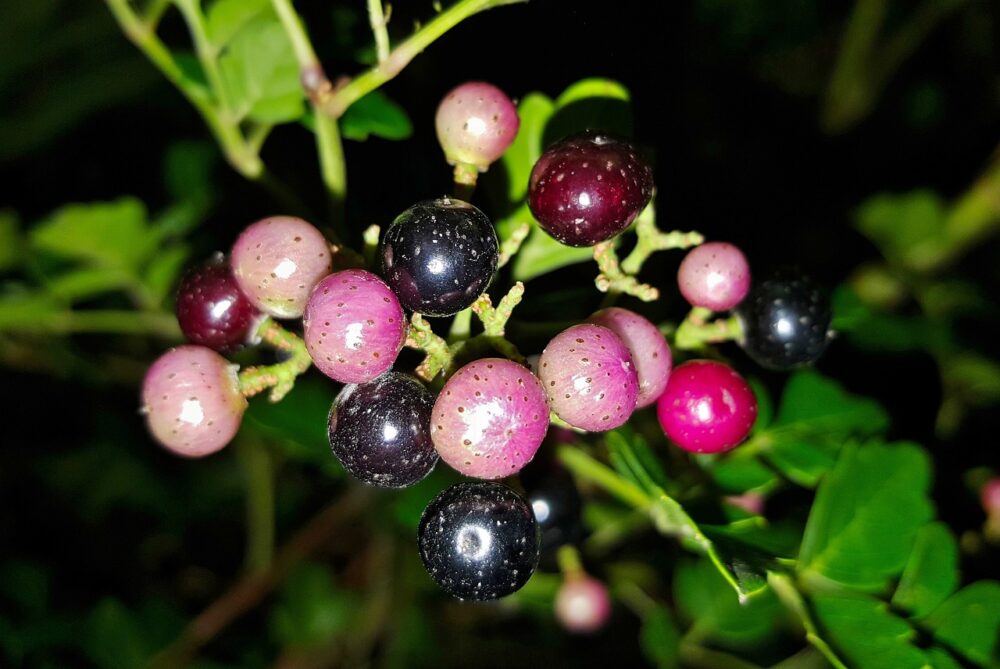
Peppervine Vs. Poison ivy
Peppervine is often mistaken for poison ivy.
How to distinguish the two:
The leaves of peppervine are typically palmately compound, with three to five leaflets. They are notched and toothed.
The plant produces small, berry-like fruit that can vary in color, including green, blue, purple, and pink.
Poison ivy leaves are compound and typically have three leaflets.
Poison ivy produces small, white berries.
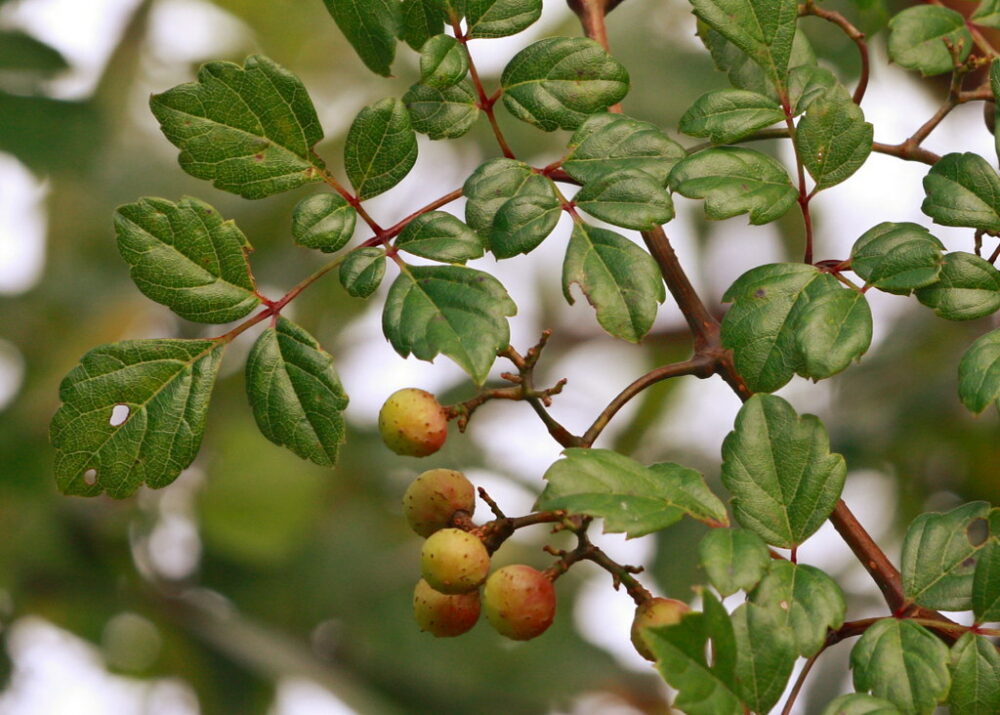
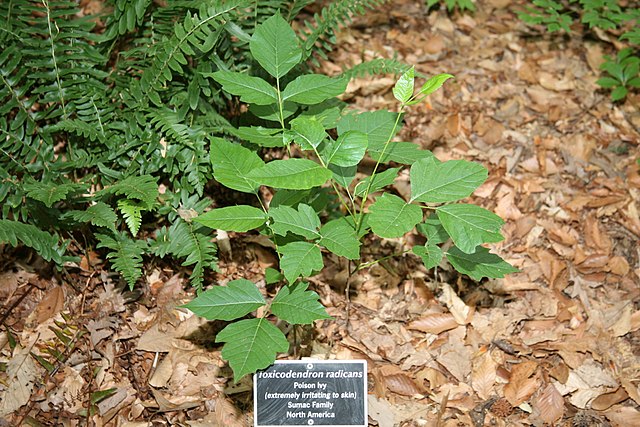
Is Peppervine Poisonous?
Not exactly, Because of its slightly sweet nature, some people eat peppervine fruit. However, there have been reports of throat irritation or stomach upset after eating peppervine berries.
So, it’s important to note that peppervine is not cultivated to be consumed, and there is generally no tradition of using it as a food source.
Is it poisonous to touch?
No, it’s not considered poisonous to touch.
Where Can You Find Peppervine?
Peppervine is native to the southeastern United States, including states like Texas, Florida, Georgia, Alabama, Mississippi, Louisiana, and parts of neighboring states.
Although the peppervine is a summer plant, you won’t find the berries making an appearance until the school year starts.
This plant is adaptable to a range of habitats and is often found in woodlands, forests, thickets, and along roadsides. It can thrive in both disturbed and undisturbed areas. You’re more likely to find peppervines hiding in partial shade.
Peppervine goes through a period of dormancy in the winter. During this time, the leaves fall, and the plant is less active.
Is Peppervine Invasive?
Ampelopsis arborea is generally not considered as invasive as some other members of the Ampelopsis genus, such as Ampelopsis brevipedunculata (Porcelain Berry).
However, its growth can still be vigorous, and in certain conditions, it may become invasive.
Can Peppervine Damage Structures?
Peppervines use tendrils to cling to and climb structures. These tendrils can become firmly attached to surfaces, and their growth can cause damage over time (damage to paint, wood, or other building materials).
Should You Grow Native Peppervine in Your Garden?
I advise you not to.
Peppervine thrives in its native habitat, giving a tasty treat to the local wildlife. But if you catch it trying to take over your garden, best yank it out in the spring before it starts showing off its flowers.
Taking action early keeps that peppervine from going all wild in your garden space.
If you’re still interested in growing this impressive vine, here’s a few tips:
- Plant peppervine in a location that receives partial to full sunlight. Ensure that the soil is well-draining.
- Peppervine is adaptable to various soil types, but it prefers a fertile, loamy soil.
- Plant peppervine in the spring or fall. Dig a hole large enough to accommodate the root ball, and place the plant at the same depth it was in the container.
- Keep the soil consistently moist. Once established, peppervine is moderately drought-tolerant.
- Provide support structures such as trellises, fences, or arbors for the vine to climb.
- Prune in late winter or early spring before new growth begins.
Once again, be mindful of the potential invasiveness of peppervine. If you want to plant an ornamental vine in your garden, I recommend:
Getting into the great, wet outdoors in search of edible plants, herbs, fruits and fungi is one of Sarah’s favorite outdoor pursuits. She thinks there’s nothing better than combining her passion for hiking with the start of the foraging season. Sarah’s definitely not afraid of a little rain and dirt, it’s all part of the fun.

